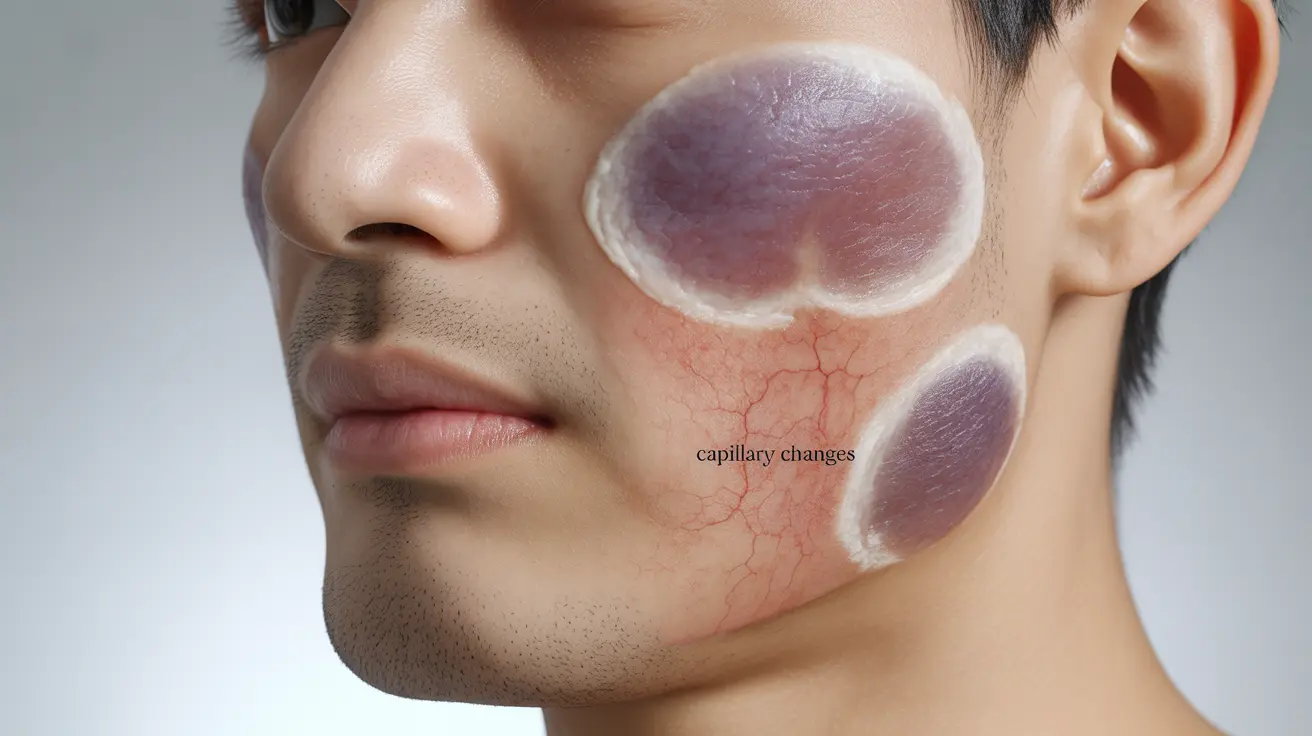Morphea on the face is a rare skin condition characterized by hardened, discolored patches that can significantly impact both appearance and skin function. This localized form of scleroderma primarily affects the skin and underlying tissues, causing distinct changes that require careful medical attention and management.
Understanding facial morphea is crucial as it can lead to cosmetic concerns and potentially affect important structures around the face. Early recognition and appropriate treatment are essential for managing symptoms and preventing long-term complications.
Signs and Symptoms of Facial Morphea
Facial morphea typically presents with several characteristic signs that help distinguish it from other skin conditions:
- Oval or round patches of hardened skin
- Color changes ranging from purple to white
- Waxy or shiny appearance of affected areas
- Smooth or slightly raised patches
- Gradual skin thickening
The condition often begins as reddish or purplish patches that may be slightly inflamed. Over time, these areas can become lighter in the center while maintaining darker borders, creating a distinctive appearance that helps medical professionals with diagnosis.
Diagnostic Process and Testing
Diagnosing morphea on the face involves several steps and may require multiple types of testing to confirm the condition and rule out other possibilities:
Physical Examination
Doctors typically begin with a thorough physical examination of the affected areas, noting the appearance, texture, and distribution of skin changes. They will also review the patient's medical history and symptom progression.
Diagnostic Tests
- Skin biopsy to examine tissue changes
- Blood tests to check for autoimmune markers
- Imaging studies to assess deeper tissue involvement
- Photography to track progression
Treatment Approaches
Treatment for facial morphea focuses on stopping disease progression and improving skin appearance. Options include:
Topical Treatments
- Corticosteroid creams
- Calcineurin inhibitors
- Vitamin D analogues
Systemic Therapies
For more severe cases, doctors may recommend:
- Methotrexate
- Systemic corticosteroids
- Phototherapy
- Immunosuppressive medications
Potential Complications
Facial morphea can lead to several complications that require monitoring:
- Restricted facial movement
- Changes in dental alignment
- Vision problems if near the eyes
- Permanent skin discoloration
- Facial asymmetry
Long-term Outlook and Management
The duration and impact of facial morphea can vary significantly among individuals. While some cases may resolve within a few years, others might persist longer and require ongoing management. Regular monitoring and adjusting treatment plans as needed are essential for optimal outcomes.
Frequently Asked Questions
What are the common symptoms and signs of morphea on the face? Common signs include hardened, discolored patches of skin that may appear waxy or shiny. Initially, these patches may be reddish or purple and later develop lighter centers with darker borders.
How is morphea on the face diagnosed and what tests might be needed? Diagnosis typically involves a physical examination, skin biopsy, blood tests for autoimmune markers, and possibly imaging studies to assess the extent of tissue involvement.
What treatment options are available for morphea affecting the face, including topical and systemic therapies? Treatment options include topical corticosteroids, calcineurin inhibitors, systemic medications like methotrexate, phototherapy, and immunosuppressive drugs, depending on severity.
Can morphea on the face cause complications with the eyes or dental health? Yes, facial morphea can potentially affect eye function and dental alignment, especially if the condition occurs near these structures. Regular monitoring by appropriate specialists is important.
How long does morphea on the face typically last, and can it cause permanent skin changes or scarring? The duration varies by individual, but facial morphea can last several years and may cause permanent changes including skin discoloration, thickness, and potential scarring. Early treatment helps minimize long-term effects.




